On a wet afternoon, a high school coach watched his phone ping as a player sat out after a hard collision. The alert came from a connected head unit that recorded force, heart rate changes, and location. In minutes, trainers reviewed the data and removed guesswork from the decision to pause play.
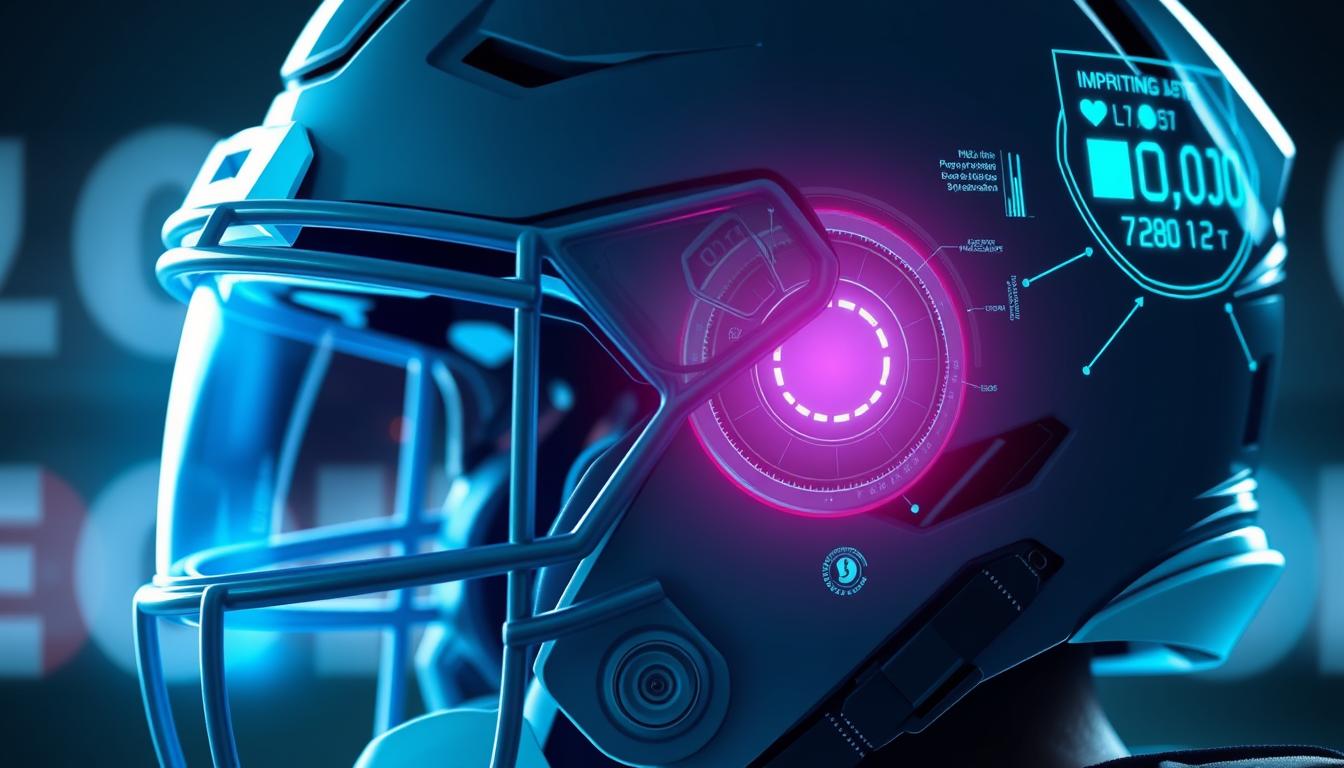
That shift—from passive gear to proactive protection—defines today’s technology. Companies such as VCT InSite, Riddell, and Catapult have shown how rugged attachments and cloud analytics turn helmets into data hubs that send real-time alarms, record vital signs, and track position with BLE, GPS, or LoRa.
Iottive offers end-to-end IoT and mobile expertise to build these solutions, from firmware to cloud dashboards. In the sections ahead, readers will learn how impact sensing, vital-sign monitoring, and app alerts help reduce preventable injuries and guide training choices.
Key Takeaways
- Connected gear turns helmets into proactive platforms for incident alerts and analysis.
- Objective data cuts response time and improves on-field decisions.
- Core features include impact analysis, vital signs, and indoor/outdoor positioning.
- Real deployments prove rugged designs and cloud analytics work in the field.
- Iottive can deliver firmware, BLE apps, and cloud integrations for pilots and rollouts.
The new playbook for safety: Why AI-powered helmets matter now
Continuous streams of athlete data are changing how staff detect injuries and manage workloads. Objective biometrics and impact metrics from wearables and a smart helmet move teams from opinion to evidence.
Nearly 50% of professional injuries are preventable when monitoring and early detection are in place. In leagues such as the NFL and NBA, Riddell’s InSite and Catapult systems give real-time exposure, load, and fatigue insights. Those signals prompt quicker checks and better on-field choices.
The benefits compound across a season. Early fatigue alerts, prompt concussion screening after notable hits, and smarter load plans cut missed time and keep key players available longer.
Modern connectivity lowers the bar for adoption: BLE pairs devices quickly indoors, GPS and LoRa extend outdoor coverage, and cloud dashboards make data easy to review. Clear workflows help coaches make better decisions about substitutions, drills, and recovery.
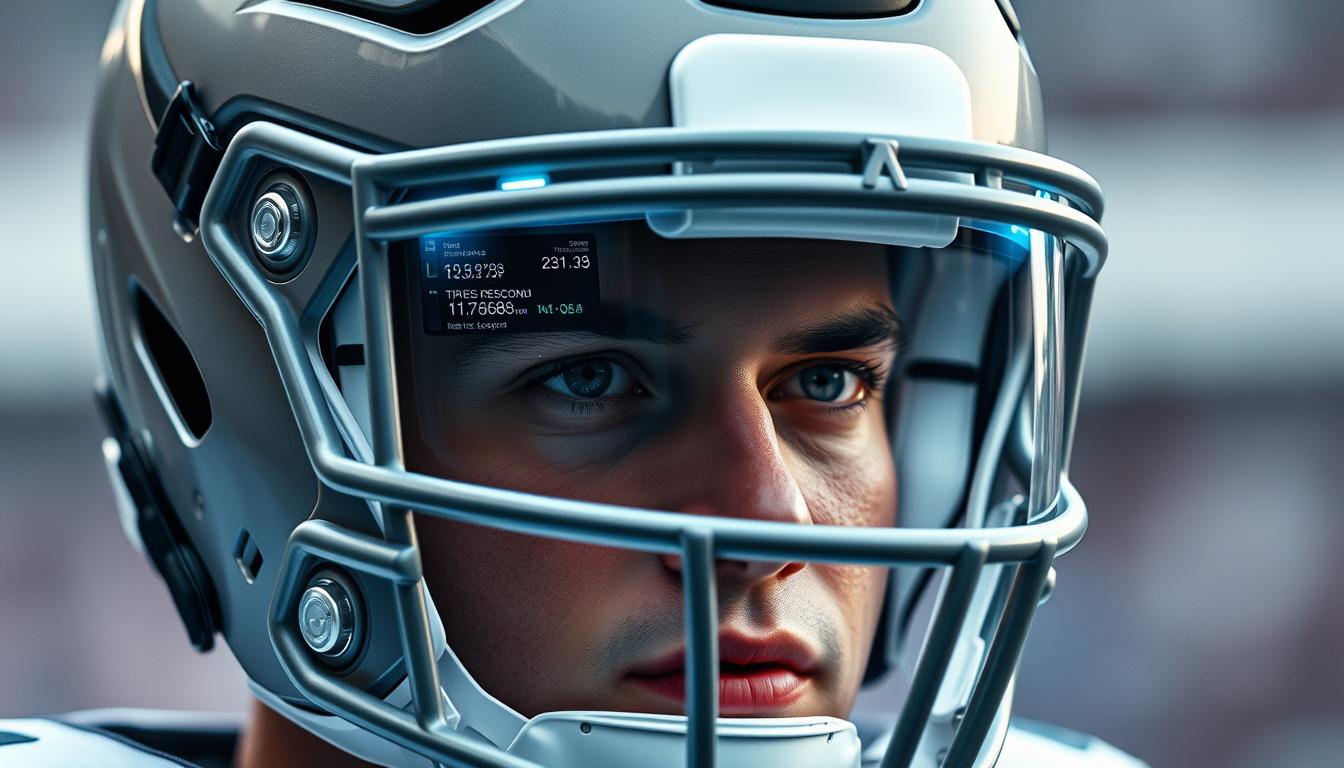
- Trust through transparency: Objective records show consistent care aligned with player needs.
- Operational value: Fewer disruptions and steadier team performance over time.
- Expert partners matter: Iottive builds BLE app development, cloud, and mobile integration so staff can act on data fast. Contact: www.iottive.com | sales@iottive.com.
What is an AI smart helmet? Components, capabilities, and how it works
Modern protective headgear combines embedded sensors and edge analytics to turn raw signals into immediate alerts and longer-term trends.
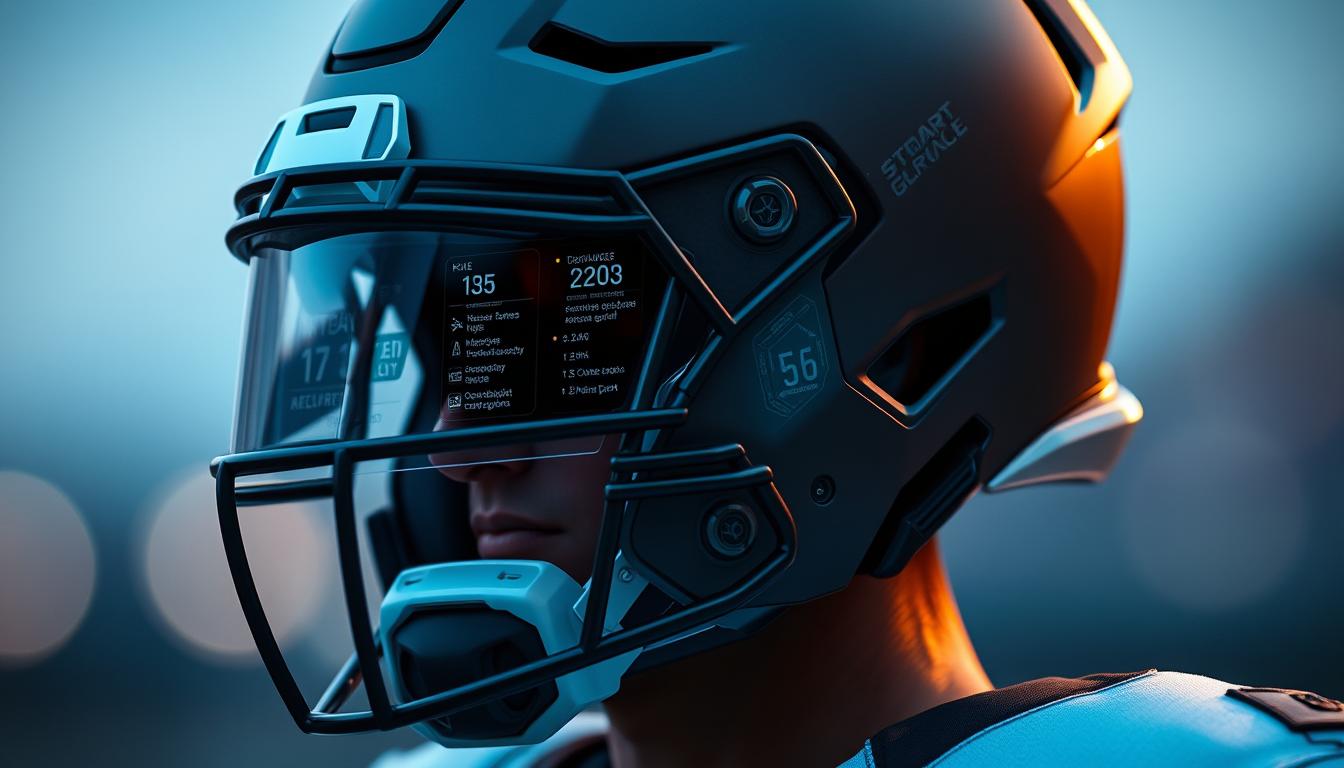
Core architecture blends a low-power microcontroller, impact units, and vitals sensors that continuously collect and pre-process signals on the unit.
Forehead thermistors give accurate body temperature readings. Optical modules track heart rate and SpO2 during activity. Environmental sensors measure AQI and humidity to flag heat or air-related risk.
Connectivity that keeps you covered
Indoor links rely on BLE and beacons for close-range location. Outdoors, GPS pairs with LoRa for long-range coverage and efficient uplinks. Automatic switching preserves battery life.
On-helmet intelligence vs. cloud insights
Edge models filter noise and flag high-priority events in milliseconds. Cloud analytics aggregate sessions to reveal baselines and trends for coaches.
- Ruggedized shells, water resistance, and optional solar covers extend runtime and durability.
- Firmware and BLE apps handle pairing, secure provisioning, and payload transfer to dashboards.
Iottive delivers custom products and end-to-end solutions, including BLE app development and cloud integration for helmet platforms.
smart sports helmet, AI motion tracker, IoT safety device
Teams now use sensor platforms to capture head kinematics, physiological cues, and location in real time.
From buzzwords to benefits: what each delivers on the field and in training
Define the platform: A helmet is a sensor-rich platform that logs impacts, head kinematics, and vitals to inform coaches and medical staff.
Role of an AI motion tracker: Advanced analysis detects rotational patterns and sudden accelerations tied to concussion risk. These models flag high-risk events so staff can act fast.
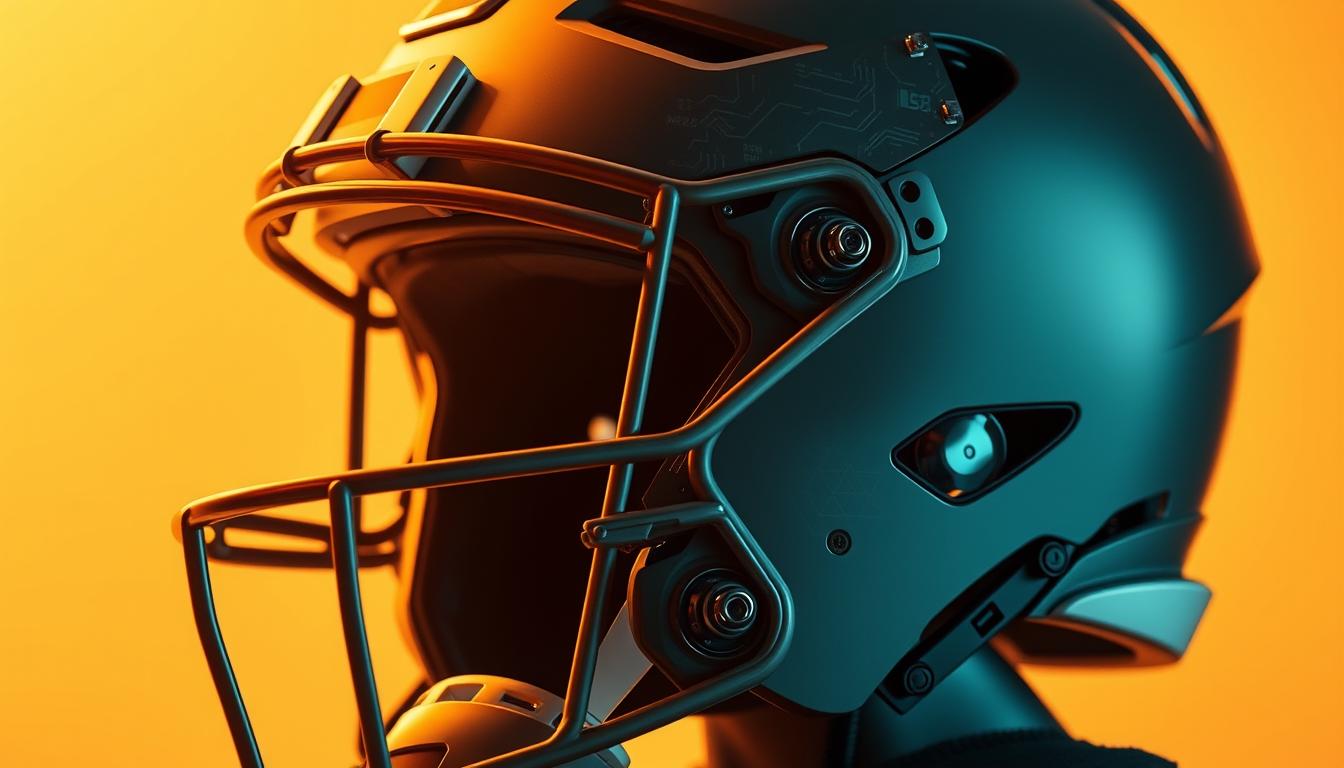
How an IoT safety device architecture helps: Embedded SOS buttons, audible alarms, and integrated comms let teams coordinate responses. BLE, GPS, and LoRa provide reliable positioning across venues.
- Earlier sideline checks and targeted drills to correct head posture.
- Continuous wearables data reduces guesswork and supports better decisions on substitutions and recovery.
- In-training uses include overload detection, heat checks, and personalized alert thresholds.
User experience matters: Simplified pairing, automatic network switching, and clear audible cues make the system easy to act on mid-play.
Post-session value: Session summaries convert raw metrics into coaching insights that make better conditioning plans and next-practice objectives.
Iottive’s IoT & AIoT Solutions turn these capabilities into working products with BLE app development and cloud and mobile integration tailored to performance and player health.
Real-time health monitoring that reduces risk and speeds recovery
Real-time vitals give coaches a live window into athlete readiness and emerging risk.
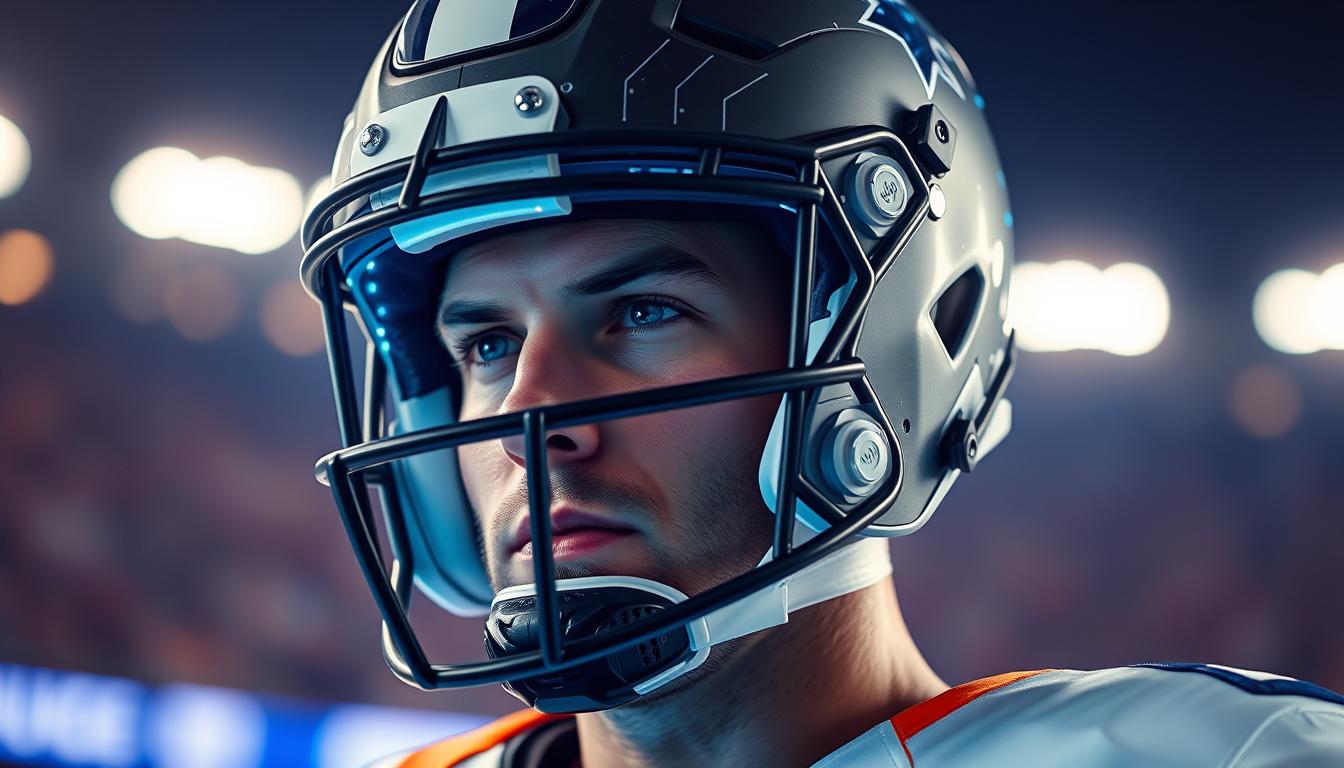
Vitals that matter: heart rate, body temperature, SpO2, and fatigue indicators
Continuous heart rate trends reveal rising load and early overexertion. Tracking heart rate alongside body temperature highlights heat stress and dehydration risks before performance drops.
SpO2 and breathing patterns matter during altitude work or high-intensity intervals. Low oxygen saturation can change exertion recommendations and feed into fatigue models.
- Live thresholds trigger in-session alerts from the unit’s UX—LEDs, haptics, or short tones that warn athletes discreetly.
- Wearables also record muscle activity and impact forces that enrich physiological context for coaching decisions.
Recovery signals: HRV, sleep trends, and load management
Nocturnal HRV, sleep quality, and resting heart rate shifts form the backbone of recovery monitoring.
Lower HRV and poor sleep predict reduced readiness. Coaches use real-time data and post-session summaries to adjust intensity, schedule active recovery, or request medical checks.
| Metric | What it shows | In-session action | Post-session use |
|---|---|---|---|
| Heart rate | Load and exertion | Trigger pacing or substitution | Evaluate conditioning progress |
| Body temperature | Heat stress risk | Hydration break or cool-down | Adjust heat-acclimation plans |
| HRV & Sleep | Recovery state | Delay high-load drills | Tailor training volume |
| SpO2 / Respiration | Oxygenation and breathing strain | Modify intensity at altitude | Inform conditioning programs |
Iottive designs mobile apps and cloud dashboards that surface vitals, HRV, and sleep trends. Team staff compare baselines, flag outliers, and schedule recovery while keeping privacy-aware consent flows in place.
Impact and head-movement detection: A smarter path to concussion safety
On-helmet sensors now separate routine contact from serious impacts by analyzing direction and force in real time.
Linear and rotational acceleration tracking both matter. Linear measures show blow magnitude. Rotational metrics reveal twisting that links more closely to concussion risk. Together they give better context than simple threshold counts.
Event classification uses local models to label contacts as routine or high-risk. Edge processing flags dangerous patterns in milliseconds and sends prioritized alerts via BLE to sideline phones and apps.
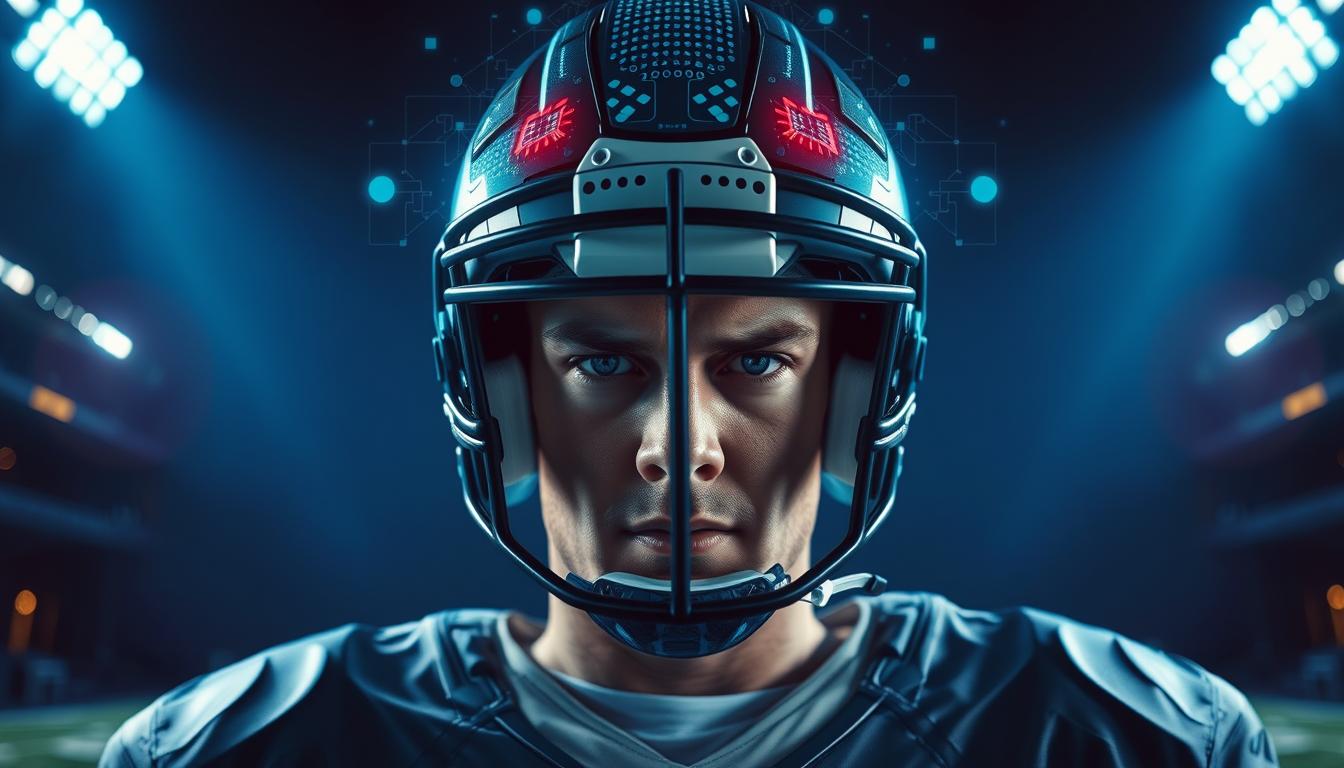
Reliable calibration and consistent sensor placement reduce false positives and missed events. Cumulative load tracking across practices and games helps teams plan medically informed rest.
- Synced video and data timelines let staff reconstruct incidents for review.
- Wearables-based analytics prompt faster checks but do not replace clinical assessment.
- Aggregated metrics inform equipment fit and technique coaching to lower future risk.
Iottive supports on-helmet analytics and cloud models for impact classification, with BLE and mobile integrations for fast sideline alerts and actionable data for staff.
Never out of reach: location tracking, SOS, and real-time communication
Real-time location updates turn an alert into action by showing exactly where help is needed.
Seamless positioning combines BLE beacons for indoor arenas with GPS + LoRa for large outdoor fields. BLE maps arenas for micro-location and routing. GPS and LoRa keep full outdoor coverage and long-range tracking.
How automatic switching works
The system switches modes automatically as athletes move. Staff see current positions without toggles. This conserves battery and keeps location feeds accurate across environments.
Emergency flows and two-way response
An SOS press triggers an audible alarm on the helmet, an in-app alert, and escalation paths for medics. Onboard speakers and microphones enable two-way guidance so responders can talk to players during a crisis.
- Faster response: Location context directs medics to exact coordinates or locker-room corridors.
- Low power: Optimized transmissions preserve runtime during long events.
- Controlled access: Role-based permissions let only authorized workers view live location and initiate protocols.
Iottive provides BLE app development and cloud & mobile integration for indoor positioning, outdoor tracking, and SOS workflows so organizations deploy a reliable, privacy-aware system fast.
From data to decisions: dashboards, alerts, and coach-friendly analytics
Clear, role-focused dashboards surface exceptions so staff act fast. Impact events, vitals outside limits, or odd movement patterns appear as prioritized cards for coaches and medical teams.
Alert logic combines thresholds and trend detection to send concise notifications with real-time data context. Rules can be time-based, player-specific, or tied to recovery scores.
Coach views summarize sessions with heat maps, player load charts, and recovery readiness scores. Session summaries and comparative reports show personal baselines and team norms to help staff make better decisions.
- Monitoring features: rapid acknowledgment, incident logging, and export for medical review.
- Integration: athlete profiles, consent controls, and medical notes keep data use compliant.
- Technology: secure APIs, encrypted storage, and scalable pipelines support multi-team deployments.
How this helps: analytics turn raw streams from wearables and a smart helmet into clear recommendations. Teams use those insights to adjust drills, manage workloads, and plan safe return-to-play paths.
How to roll out smart helmets in your organization
A phased rollout with measurable targets helps organizations prove value fast. Start small, define success, and plan consent and data handling before hardware ships.
Designing a pilot: goals, metrics, and athlete consent
Define scope with clear goals — reduced heat incidents, faster concussion triage, or improved recovery. Record baseline metrics and consent forms so every athlete and worker understands data use.
Integration: mobile apps, BLE pairing, and cloud data pipelines
Plan provisioning with labeled units, firmware versions, and pairing checklists to speed setup. Architect secure cloud ingestion and role-based access for protected data flows.
Implementation notes: use encoded compact payloads to boost battery life and custom algorithms to stabilize indoor localization in crowded areas. Forehead-mounted temperature sensors improve body readings.
Change management: coach/athlete training and policy alignment
Train coaches and athletes on alerts, SOS flows, and dashboard summaries. Test fit, comfort, and replacement processes. Establish retention, sharing, and medical oversight policies that align with league rules.
- Iottive supports end-to-end pilots: provisioning, pairing flows, cloud ingestion, analytics, privacy controls, and stakeholder training.
- Contact: www.iottive.com | sales@iottive.com
Common challenges and practical fixes
Field deployments often surface unexpected challenges that teams must solve quickly to keep players and workers protected. Practical fixes combine hardware tweaks, firmware choices, and clear policies so operations run smoothly.
Data privacy, consent, and secure storage
Protecting athlete information starts before a unit ships. Enforce strong encryption in transit and at rest. Use secure cloud storage, role-based access, and transparent consent flows so everyone knows how information is used.
Accuracy, battery life, and ergonomics
Place the temperature sensor on the forehead strap for reliable body readings. Use smaller encoded strings and adaptive sampling to cut transmissions and extend runtime.
- Sensor accuracy: run calibration routines and periodic validation versus clinical tools.
- Runtime: adopt power-aware firmware schedules and compact payloads to save battery.
- Comfort: reduce circuit weight with multi-layer PCBs and balance attachments for wearability.
“Implement incident logs and escalation playbooks so staff refine thresholds and keep responses consistent.”
Iottive combines UX-first design, secure cloud workflows, and modular hardware to deliver practical solutions for these issues.
Why partner with Iottive for custom smart helmet and AIoT solutions
Cross-industry lessons speed delivery and reduce risk. Iottive turns rugged field experience into repeatable roadmaps that help teams launch reliable platforms faster.
BLE app development, cloud and mobile integration that just works
Iottive builds BLE apps, firmware, and cloud back ends that synchronize under demanding conditions. Our engineering stacks include OTA updates, alerting engines, and secure provisioning so units pair and report reliably.
Proven expertise across sports, industrial, and healthcare use cases
We apply lessons from industrial smart installations—BLE/GPS/LoRa positioning, SOS flows, rugged materials, and solar-assisted power—to deliver proven helmet technology for athletic programs.
Build your solution: www.iottive.com | sales@iottive.com
- Modular features from impact sensing to location and health metrics, tailored per sport and level.
- Design for varied work environment conditions with weatherproofing and usability choices.
- Engagement models: discovery, pilot, iterative scale, and ongoing support to match team calendars.
Result: validated solutions that combine product accelerators and multi-domain know-how so stakeholders can scope pilots and timelines with confidence.
Conclusion
Modern field programs now pair on-body vitals with impact and location feeds to turn raw signals into usable insights. Integrated wearables and calibrated sensors monitor heart rate, temperature, and body motion so staff get timely, real-time data across training levels.
, A unified system combines positioning, impact detection, and clear alert features to speed tracking and detection. Post-session analytics quantify stress levels and guide safe return-to-play steps. Ergonomics, battery strategy, and rugged design are essential so athletes accept continuous use.
Pilot with defined metrics, privacy controls, and a tight toolset. End-to-end solutions from experienced partners can tailor sensing packages and analytics to your needs. Contact: www.iottive.com | sales@iottive.com .
FAQ
What is a smarter helmet and how does it protect players?
A smarter helmet combines on-helmet sensors and cloud analytics to monitor impacts, vital signs, and environmental conditions. Sensors measure head acceleration, heart rate, body temperature, and blood oxygen. Real-time alerts and coach dashboards help medical staff spot concussion risk and heat or respiratory stress faster, so teams can remove at-risk players and start care immediately.
Which core sensors are typically included and why do they matter?
Typical sensor sets include accelerometers/gyros for impact and head movement, PPG or ECG for heart rate, skin thermistors for body temperature, pulse oximetry for SpO2, and air quality/humidity monitors. Each metric helps detect acute injury, heat illness, or breathing issues. Combined signals improve confidence in event detection versus single-sensor alerts.
How does connectivity work indoors and outdoors?
For indoor arenas, low-energy Bluetooth beacons and local gateways provide precise positioning and low-latency telemetry. Outdoors, GPS combined with long-range radio like LoRa gives wider-area tracking and reduced data costs. This hybrid approach keeps data flowing in both training halls and open fields.
Do these helmets process data on the device or in the cloud?
Modern systems use a hybrid model. On-helmet computing handles immediate event detection and low-latency alarms. Aggregated data and advanced analytics run in the cloud to produce player trends, fatigue models, and coach-facing dashboards. This balances speed, battery life, and richer insights.
How do real-time vitals monitoring and recovery metrics reduce risk?
Continuous vitals like heart rate, temperature, and SpO2 flag acute problems such as heat stress or hypoxia. Recovery metrics—HRV, sleep patterns, and workload history—help staff adjust training loads and return-to-play decisions. Objective data shortens diagnosis time and guides safer rehabilitation.
Can the helmet detect concussions or just impacts?
Helmets detect impact magnitude and head kinematics, which indicate concussion risk but cannot diagnose a concussion alone. Combining impact data with symptoms, cognitive tests, and vitals improves identification. The system is a decision-support tool, not a substitute for medical evaluation.
How do location tracking and emergency features operate during an incident?
Positioning systems provide real-time coordinates in the facility or on the field. Built-in SOS buttons and automated alarms send alerts to sideline staff and emergency contacts with the player’s location. Rapid communication protocols help shorten response time and coordinate care.
What kind of analytics and alerts do coaches receive?
Coaches get dashboards showing live status, trends, and risk flags. Alerts can be tuned for impact thresholds, abnormal vitals, or fatigue warnings. Exportable reports assist load management, injury prevention planning, and post-game review.
How should an organization pilot and scale a helmet program?
Start with a defined pilot: set safety and performance goals, select metrics, and obtain athlete consent. Test BLE pairing, app workflows, and cloud pipelines. Train coaches and medical staff on policies, then iterate on thresholds and integration before wider rollout.
What are common technical challenges and practical fixes?
Typical issues include battery life, sensor accuracy, and helmet fit. Fixes involve duty-cycling sensors, field calibration routines, ergonomic shell design, and regular firmware updates. User training reduces false alarms from improper wear.
How is athlete data protected and who owns it?
Secure systems use encryption in transit and at rest, role-based access, and consent-driven data policies. Organizations should define ownership and retention rules upfront and comply with applicable privacy laws and league or institutional guidelines.
Can helmet systems integrate with existing team apps and platforms?
Yes. Modern solutions expose APIs, mobile SDKs, and cloud connectors for roster syncing, medical records, and performance platforms. Integration planning ensures data flows to coach apps and EMR systems without manual entry.
What organizations benefit most from adopting this technology?
School athletic programs, professional teams, sports medicine clinics, and occupational groups working in hazardous environments benefit. Any organization prioritizing swift incident detection, data-driven recovery, and worker or athlete health gains from these solutions.
Who can help build or customize a helmet solution?
Vendors with experience in BLE app development, cloud integration, and field deployment can tailor solutions. Look for partners with proven work across sports, industrial, and healthcare projects to ensure interoperability and regulatory awareness. For example, companies offering BLE app development and end-to-end IoT/AIoT services can accelerate pilots and scale.